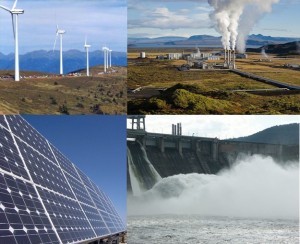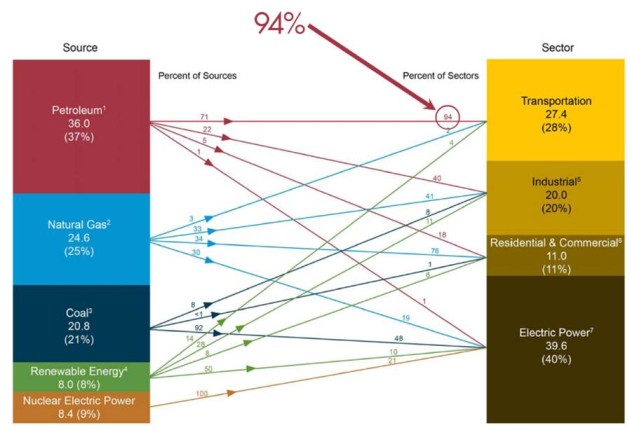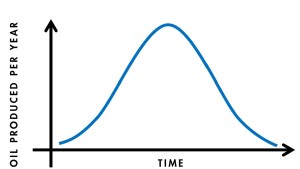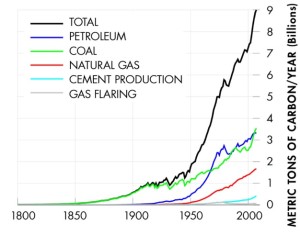Let’s rejuvenate with renewable energy!
 Man has always had an insatiable thirst for energy, since the day he first stepped on the earth. From thermal energy of fire to rotational motion of the wheel to even the power of flowing rivers giving life to earliest farms, energy has been the driving force behind creating and nullifying civilizations. It was energy responsible for breathing life into industries of 17th century and even for inducing several wars. In short, energy has helped shape mankind’s ascent to primacy on the earth like nothing else.
Man has always had an insatiable thirst for energy, since the day he first stepped on the earth. From thermal energy of fire to rotational motion of the wheel to even the power of flowing rivers giving life to earliest farms, energy has been the driving force behind creating and nullifying civilizations. It was energy responsible for breathing life into industries of 17th century and even for inducing several wars. In short, energy has helped shape mankind’s ascent to primacy on the earth like nothing else.
Brief peep into history:
Of all the fossil fuels, oil has perhaps been the most indispensible, the most vital. It is liquid and it was found to be light and energy dense, making it perfect for use in transportation. With the utilization of these fuels, man built steam engines and bigger than ever industrial belts. As the society progressed, oil penetrated more and more into our lives. So much so that today in the US, nearly 94% of all transportation energy comes from petroleum. From the times when coal was discovered till this date, coal and fossil fuels have been powering our ambitious endeavors.

So, where does the problem lie? Why can’t we just relax and keep on walking forth on our road to modernization?

Peak oil
Oil is definitely the fuel not just for our machines but also for our futuristic undertakings. But we can’t expect to be extracting oil indefinitely. It has been observed that this is the shape of the curve of oil production over time.
Oil production increases as exploration uncovers new sources and improved technology extracts more oil. Oil production then declines, as oil is a finite resource – less new reserves are uncovered, and old fields are exhausted. Peak Oil, sometimes known as “Hubbert’s Peak” is the point in time when oil is extracted at its highest rate. The Society of Petroleum engineers estimate that oil would last about 40 years from now.
Global warming

The use of coal and fossil fuels belch forth tons of toxic gases in the atmosphere. These gases, mainly Carbon Dioxide and Methane, are supposed to be responsible for trapping the heat of the sun after it gets reflected from the earth’s surface, thus leading to an overall increase in global temperatures, fall in food production, accompanied by high incidence of diseases and inundation of many lands due to rising sea levels.
Renewable energy
Renewable energy is defined as energy that comes from resources which are continually replenished on a human timescale such as sunlight, wind, rain, tides, waves and geothermal heat. Renewable energy is non-polluting, secure and sustainable. Moreover they are expected to supply human civilization with energy for the next 1 billion years. Let’s have a look at each of the major renewable energy sources and discuss their advantages, scope and limitations.
Hydro power
Hydroelectricity is perhaps the largest single source of renewable energy. The first use of the kinetic energy of flowing water was perhaps made to help ships sail on the seas. Water is about 800 times denser than air. The potential of flowing water has been well understood and well utilized by man. Several dams and hydro-electric power plants have been set up around the world, majority of them in rural and remote areas, bringing to these areas electricity crucial for their development. Besides providing water for irrigation purposes, dams don’t create any thermal or air pollution. However, it has also been observed that dams destroy the ecology of the surroundings as large chunks of lands are inundated, displace native tribal populations and also trigger earthquakes like the Hoover dam in USA.
Over the years man has learnt to compare the sources of energy on a scale of EROEI (Energy Returned On Energy Invested). Hydroelectric power plants have EROEI of 100, i.e. 1.25 times greater than that of coal and oil.
Solar Power
Solar energy refers to the energy from the sun in the form of solar radiation which can be used to harness heat or to generate electricity.
However, it has been calculated that the EROEI factor for solar power is abysmally low. It is around 6.8. However with the recent advancements in the solar PV technology, the scenario is improving. The nascent Zenith technology not only captures the sun’s light energy but also the solar heat energy to generate electricity.
Wind power
Wind power is growing at the rate of 30% annually, with a worldwide installed capacity of 282,482 megawatts (MW) at the end of 2012, and is widely used in Europe, Asia, and the United States. With EROEI of 18, more and more green-sector companies are investing in wind power. The histogram below shows the growth of wind power in the recent few decades.

Biofuels
Recent research has also shown that solid biomass like rice husk, farm residues etc. can be instrumental in producing fuels, called biofuels. These fuels provided nearly 2.7% of world’s transport fuel in 2010. However, EROEI of biofuels has been found to be close to 1. That means they don’t have any significant competitive advantage over their counterparts, fossil fuels.
Other sources
The heat energy rising from underneath the earth and the kinetic energy of the tides in the seas and oceans can immensely help mitigate the looming energy crisis. Moreover, nuclear energy also is being used to generate clean energy. However, the nuclear waste generated and the fear of nuclear fallout have lead to the phenomenon of NIMBYism (Not In My BackYard), wherein the people support the establishment of nuclear plants but not near their locality.
Challenges
There are a number of other challenges that are currently being faced by renewable energy sector. First is that they are land intensive. It takes a lot of land to set up a wind farm or a solar farm, which can otherwise be used for some other equally fruitful activity. Second is the disparity in the availability of the required resources, like abundance of solar power in deserts but not at the poles. The landlocked countries can never think of using tidal energy for energy security of their nation. The nations which are bereft of most of the resources have to depend on other nations. This can lead to monopolization of energy by some countries to dominate over the other.
Moreover, it has been observed in a research work conducted by Archer and Jacobson that setting up wind farms slows down the winds passing by, thus creating a wind shadow in the regions following the wind farm. Reduction of wind speeds can play havoc with global climates in the distant future.
Conclusion
Renewable energy resources hold a lot of untapped potential to alleviate the looming energy crisis. Hydro-electricity along with solar power and wind power are areas where maximum development is possible. The exigency of the hour is to rise up to the occasion and devise ways to make optimal utilization of these eternal sources of energy.
Author’s Bio;
 Arijit Goswami is an engineering student at University Institute of Engineering and Technology, Panjab University, Chandigarh. He is an avid content writer and is associated as a writer in the marketing department of AIESEC Chandigarh. He is also the Editor-in-chief at L@TEEN, the online newspaper module of Edurev. Moreover, he also takes keen interest in event organizing activities in his institute and has worked at executive position in SAE-Efficycle-2012, a national inter-collegiate tricycle design competition. Being an executive member of the NGO Youth United, he has also worked as an organizing member of the event Smiling Future. This campus ambassador of Let Me Know, however, loves to read blogs and is always zealous to take online courses on Coursera and NovoED. When not sitting at his study table, he can be found chatting with his friends. He aims to be a social entrepreneur one day and work in cohesion with the people who want to be authors of a positive change in tomorrow’s world. Arijit can be contacted at goswami.arijit16@gmail.com.
Arijit Goswami is an engineering student at University Institute of Engineering and Technology, Panjab University, Chandigarh. He is an avid content writer and is associated as a writer in the marketing department of AIESEC Chandigarh. He is also the Editor-in-chief at L@TEEN, the online newspaper module of Edurev. Moreover, he also takes keen interest in event organizing activities in his institute and has worked at executive position in SAE-Efficycle-2012, a national inter-collegiate tricycle design competition. Being an executive member of the NGO Youth United, he has also worked as an organizing member of the event Smiling Future. This campus ambassador of Let Me Know, however, loves to read blogs and is always zealous to take online courses on Coursera and NovoED. When not sitting at his study table, he can be found chatting with his friends. He aims to be a social entrepreneur one day and work in cohesion with the people who want to be authors of a positive change in tomorrow’s world. Arijit can be contacted at goswami.arijit16@gmail.com.
Do you have a flair for writing? Interested in environmental issues? Why don’t you submit an article for the GreenCleanGuide 2013 contest? For contest rules, please visit this link.


